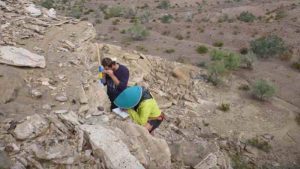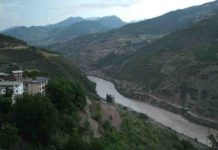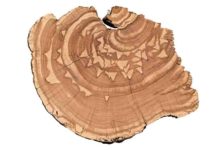
Five million years ago, the Colorado River met the Gulf of California near the present-day desert town of Blythe, California. The evidence, say University of Oregon geologists, is in the sedimentary rocks exposed at the edges of the valley where the river flows today.
The layers vary rhythmically in thickness, reflecting the influx of sea current during strong spring and weak neap tides, and point to 330 meters (1,082 feet) of uplift of the seafloor in roughly the past 5 million years, said UO graduate student Brennan O’Connell, lead author on a paper online ahead of print in the journal Geology.
The findings provide compelling evidence that this region — the southern Bouse Formation that is rich in tidal features — once was under a northern-reaching, marine water arm of the Gulf of California. That view counters the notion that the southern Colorado River corridor was the southern-most lake of a long chain of large freshwater lakes that filled during first arrival of river waters.
“The recognition of tidal deposits in the Bouse Formation places an important new constraint on uplift of a broad region from the San Andreas fault to the western Colorado Plateau over the past 5 million years,” said co-author Rebecca J. Dorsey, a professor in the UO Department of Earth Sciences who has studied the river’s route for many years. “This study makes an important step toward resolving a 20-year-old debate about the depositional environments and tectonic significance of this area.”
The Colorado River today takes a meandering journey of some 160 miles from Blythe, passing under Interstate 10 and flowing mostly southward to where it empties into the present-day northern reach of the Gulf of California.
The lake perspective on these deposits is based on geochemical findings, including strontium, carbon and oxygen isotopes. Scientists supporting the lake theory have suggested that marine fossils found in the rocks resulted from birds carrying sea organisms into the region. The new findings, O’Connell said, complement evidence by paleontologists who have argued for a marine environment for more than 50 years based on the presence of marine fossils.
“We came at it from a new perspective,” O’Connell said. “We focused more on the features of the rocks, connecting them with both chemistry and paleontology. We wanted to understand the ancient environments these rocks were formed in by identifying distinct features. Sedimentary deposits look very different if they are produced in a lake versus a tidal setting.”
Thickness variations of the layers contain clues to depositional processes, she said. Stronger tides transport higher loads of sediment. O’Connell’s UO team used a mathematically driven Fourier analysis to graph the thickness of sedimentary layers in relation to tidal velocities. The results point to regular tidal cycles rather than random movements of sediment that would be produced by tributary river floods, storms, wind-generated lake currents or annual biochemically induced deposition.
“The stronger and higher the tides, the more sediment is transported, producing a thicker layer ” she said. “Spring tides produce thick layers of sediment, and neap tides produce thin layers. Differences in tidal current velocities are clearly seen in these layers of exposed sedimentary rocks. This didn’t happen in a lake. Lakes don’t have tides large enough to create such variations.”
Reference:
O’Connell O’Connell, Rebecca J. Dorsey, Eugene D. Humphreys. Tidal rhythmites in the southern Bouse Formation as evidence for post-Miocene uplift of the lower Colorado River corridor. Geology, 2016; G38608.1 DOI: 10.1130/G38608.1
Note: The above post is reprinted from materials provided by University of Oregon.










